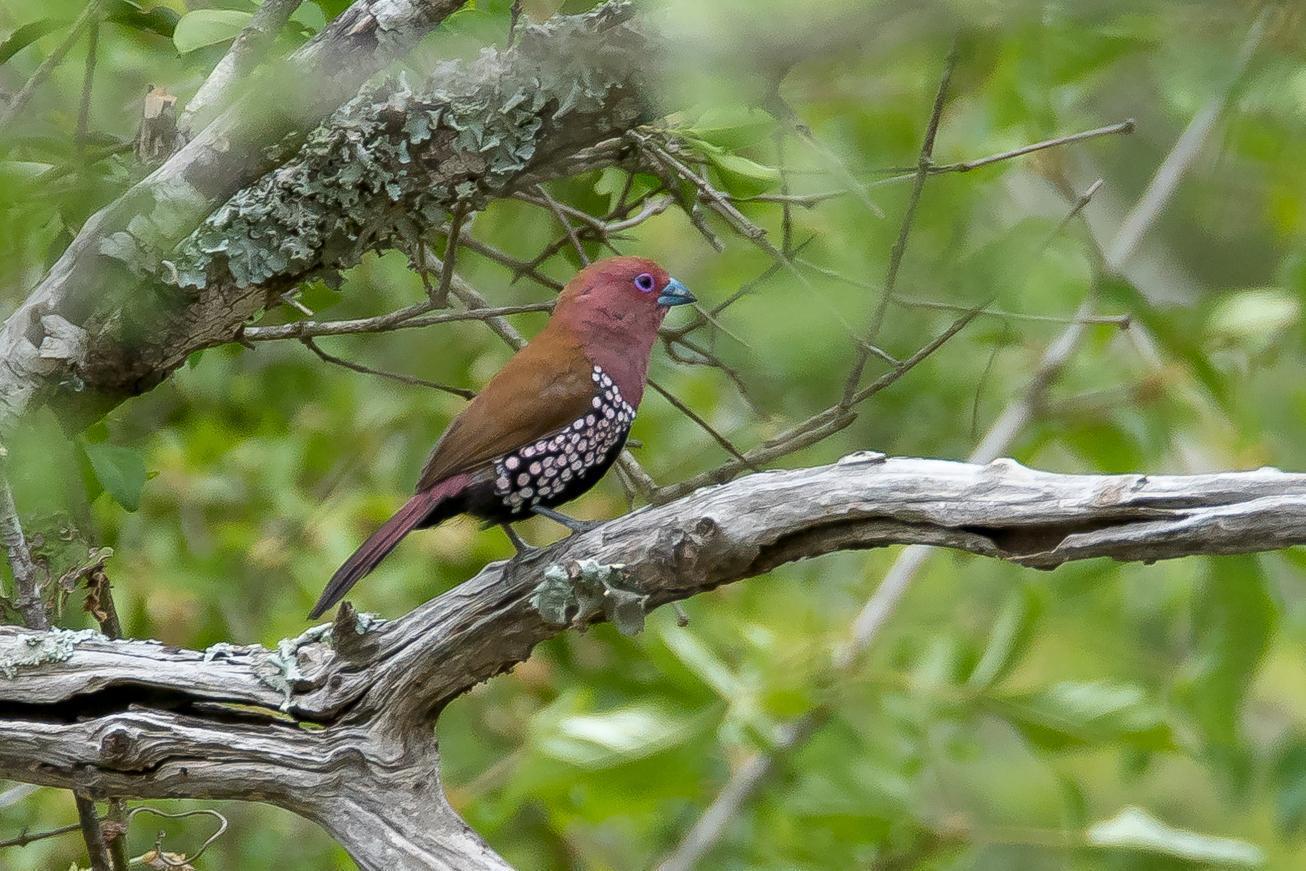
In the vibrant tapestry of southern Africa’s avian wonders, the Pink-Throated Twinspot stands as a captivating gem, adorned with nature’s delicate brushstrokes. With its guava pink face and tail, polka dot-flecked belly, and pearl-like white spots, this diminutive bird exudes an enchanting charm that has captured the hearts of those fortunate enough to behold it.
The Pink-Throated Twinspot, scientifically known as Hypargos margaritatus, belongs to the family of estrildid finches. Its exquisite appearance paints a portrait of elegance, with the male showcasing a more conspicuous display of coloration. A pink face, throat, and crown set him apart, invoking a sense of wonder akin to the mythical hundred-eyed giant, Argus. The name “Margaritatus,” meaning “adorned with pearls,” aptly befits this avian masterpiece, crowning it the “small, hundred pearly-eyed marvel.”
Hailing from the southern reaches of Africa, the Pink-Throated Twinspot graces the landscapes from southern Mozambique to Swaziland, with occasional appearances in Mpumalanga and northern Limpopo Province. These alluring creatures find solace in habitats such as dry thick scrub, tangled woodlands, palm savannas, and the fringes of forested realms. It is within these hidden corners that the Pink-Throated Twinspot weaves its presence into the natural tapestry.

Feeding on a diet predominantly consisting of seeds, supplemented occasionally with insects, the Pink-Throated Twinspot maintains a delicate balance within its ecosystem. However, the details of its breeding season remain shrouded in mystery, as only a couple of nests have been documented in the wild. These nests, constructed with finesse, take the form of untidy balls, adorned with dry grass, skeletonized leaves, and spider webs. Palm fibers and leaf litter create a cozy lining, while the eggs, up to four in number, incubate within for a span of 20 to 21 days.

While the global status of this species is not under immediate threat, the Pink-Throated Twinspot faces a near-threatened designation within South Africa and Swaziland. Habitat destruction and the caged-bird trade cast shadows on its existence, urging us to recognize the importance of its preservation.

In the face of these challenges, we are granted a fleeting opportunity to witness the captivating elegance of the Pink-Throated Twinspot. As its presence graces the Southern African landscapes, it beckons us to embrace its fragile beauty and honor its place within the intricate web of life. In the video provided below, we extend an invitation to partake in this wondrous encounter, a glimpse into the world of one of nature’s most exquisite creations.





